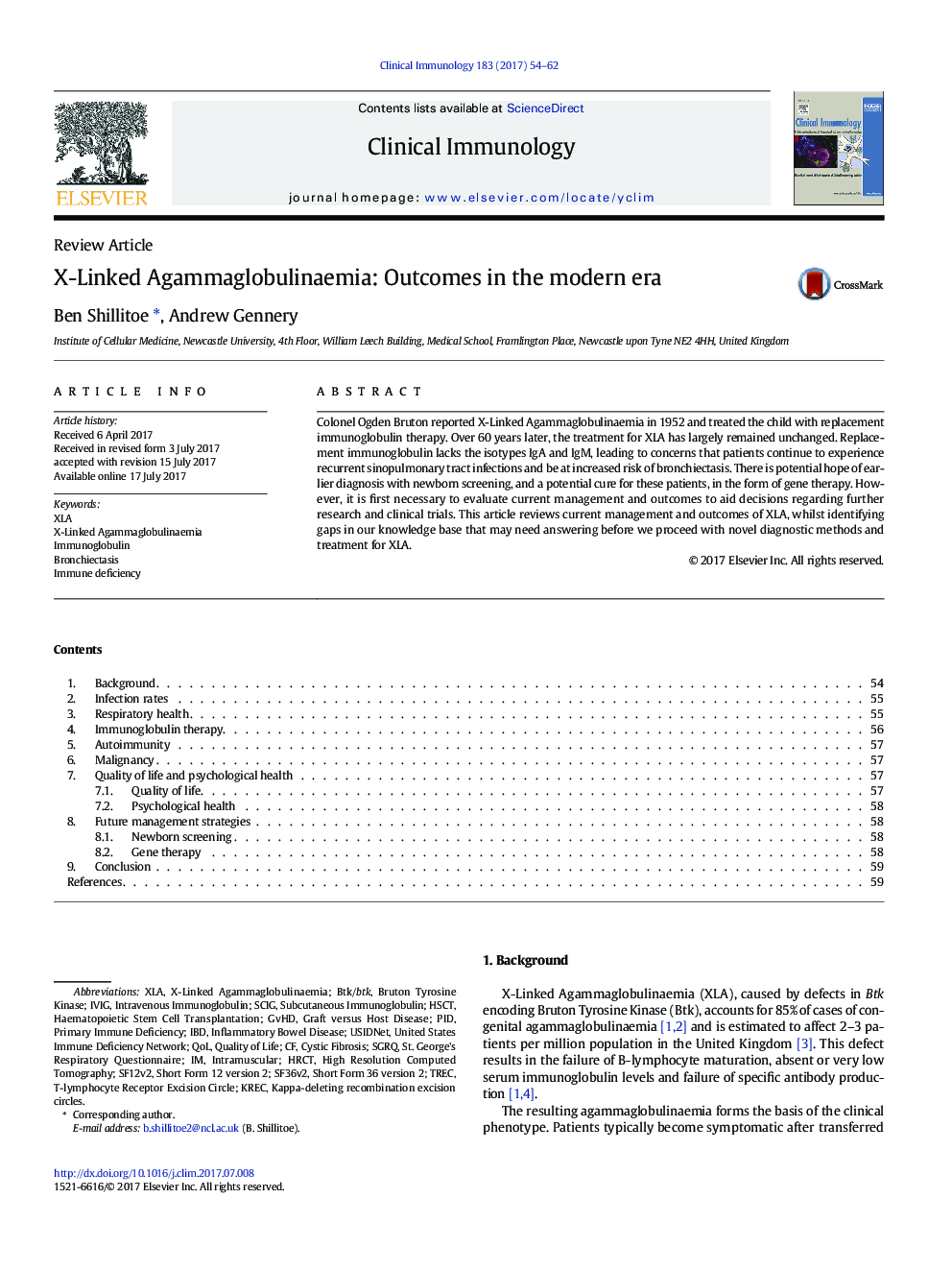| Article ID | Journal | Published Year | Pages | File Type |
|---|---|---|---|---|
| 5654790 | Clinical Immunology | 2017 | 9 Pages |
â¢Current therapy is likely to be limited in its ability to prevent complications.â¢Of particular concerns is the development of bronchiectasis.â¢Rates of bronchiectasis are significant in XLA despite current optimal therapy.â¢Novel management options are possible, notably newborn screening and gene therapy.â¢More data are needed to fully evaluate current outcomes in XLA.
Colonel Ogden Bruton reported X-Linked Agammaglobulinaemia in 1952 and treated the child with replacement immunoglobulin therapy. Over 60Â years later, the treatment for XLA has largely remained unchanged. Replacement immunoglobulin lacks the isotypes IgA and IgM, leading to concerns that patients continue to experience recurrent sinopulmonary tract infections and be at increased risk of bronchiectasis. There is potential hope of earlier diagnosis with newborn screening, and a potential cure for these patients, in the form of gene therapy. However, it is first necessary to evaluate current management and outcomes to aid decisions regarding further research and clinical trials. This article reviews current management and outcomes of XLA, whilst identifying gaps in our knowledge base that may need answering before we proceed with novel diagnostic methods and treatment for XLA.
